|
Messerschmitt Bf 109 G-6/AS
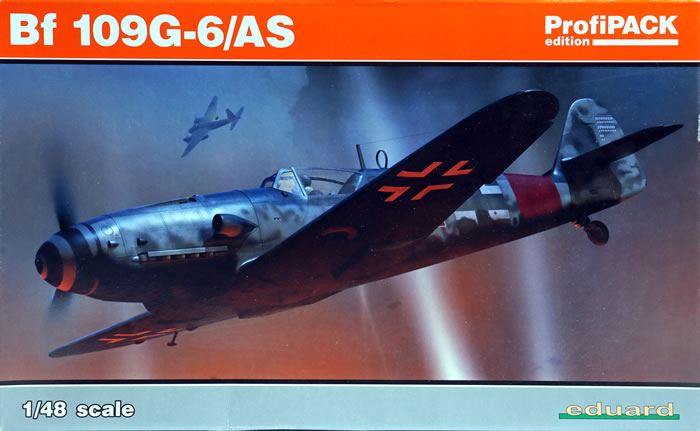
Eduard ProfiPACK, 1/48 scale
S
u m m a r y |
| Catalogue Number: |
Eduard Kit No. 82163 - Bf 109 G-6/AS |
| Scale: |
1/48 |
| Contents and Media: |
188 parts in grey coloured plastic (including more than 70 marked not for use); 10 parts in clear; colour photo-etched fret; self-adhesive die-cut masking sheet; markings for five aircraft |
| Price: |
USD$49.95 plus shipping,
available online now from Eduard
GBP£26.46 (£22.05 Export Price) plus shipping available from Hannants |
| Review Type: |
FirstLook |
| Advantages: |
New fuselage; accurate; high level of detail; outstanding surface features including crisply recessed panels and subtle rivet lines where appropriate; includes colour photo-etched parts; separate control surfaces; many useful options; high quality decals; includes die-cut canopy masks. |
| Disadvantages: |
Somewhat overheight exhaust stacks. |
| Conclusion: |
Eduard's 1/48 scale Messerchmitt Bf 109 G-6/AS is another very welcome addition to their re-tooled Gustav family. This is also the first time that a proper G-6/AS variant has been aviable straight from te box. At less than USD$40, it is great value too. |
Reviewed by Brett Green

Eduard's 1/48 scale Messerschmitt Bf 109 G-14 is available online from Squadron.com
In the never-ending effort to squeeze better performance out of Germany's most numerous fighter aircraft, the large supercharger of the DB 603 engine was combined with the standard powerplant of the Bf 109 G, the DB 605 A. The resulting engine was designated the DB 605 AS.
The installation of the more powerful engine required a redesigned engine cowling. The broad-chord VDM 9-12159 propeller blades were also fitted. In other respects, however, the Messerschmitt Bf 109 G-6/AS resembled a late-production Bf 109 G-6. These distinguishing features include Erla Haube clear vision hood; short strut tailwheel; and narrow main wheels with small upper wing bulges. Including conversions, nearly 700 Bf 109G-6/AS aircraft were delivered to the Luftwaffe.

The Bf 109 G-14/AS was built in greater numbers than the G-6/AS. The later aircraft was sometimes fitted with a deeper oil cooler cover, but many were externally identical to the G-6/AS. Approximately 1,000 Bf 109G-14/AS aircraft were produced.
Eduard continues to work through the Messerschmitt Bf 109 G family, this time offering the Bf 109 G-6/AS. This is the first time the G-6/AS has been available as a mainstream 1:48 scale kit straight from the box.
This time around, Eduard has done much as Messerschmitt themselves did - adding a new fuselage with the revised nose to what is otherwise a late version Messerschmitt Bf 109 G-6.
Eduard's Bf 109 G-6/AS ProfiPACK comprises 188 parts in grey plastic, 10 parts in clear, a coloured photo-etch fret, self-adhesive canopy masks and markings for four aircraft. More than 70 of the parts are marked “not for use” and there are a few optional parts too, so the actual number of parts used is quite modest.
You're not too far away from a Bf 109 G-14/As either - its just a bit of hatch filling and scribing - but I am sure that Eduard ill be releasing this as a dedicated kit soon enough.
The new parts in this kit are the fuselage halves.
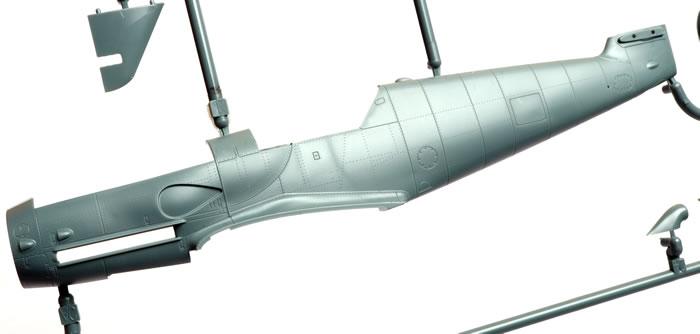
As usual with Eduard's Gustav family, the lower wing is full span and upper wings provided in port and starboard halves.
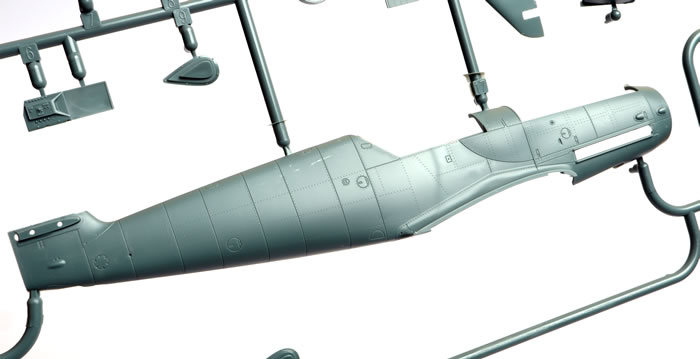
Structural detail is moulded on the inside of the upper wing, which will be visible from below as the wheel well ceiling.
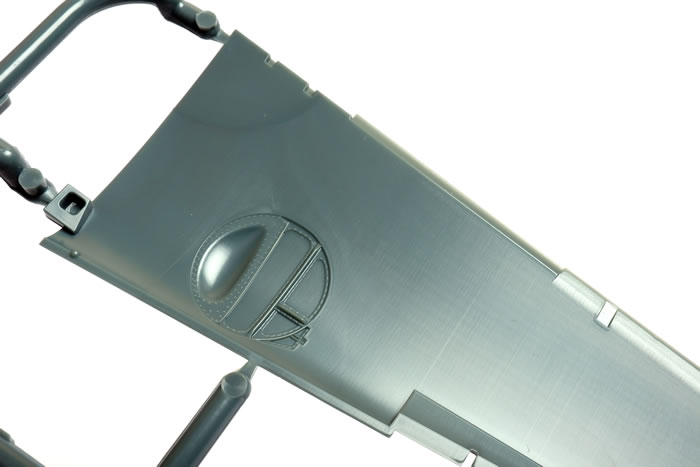
The fuselage is moulded with a separate fin, making it easy to cross-kit the tall and short vertical stabilisers.
The compound bulges of the streamlined engine cowling of the G-6/AS are subtle, especially the port side that accomodates the larger supercharger and modified engine mounts. I think Eduard has done a pretty good job here.
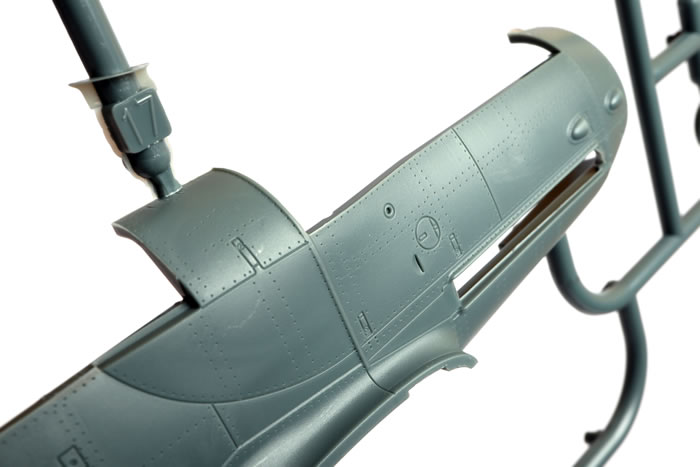
They have depicted the kinked bottom edge of the cowling and the compound bulge on the port side.

The fixed fairings that are typical of the DB 605 D powered G-10 and K-4 variants are not present on the G-6/AS. This is correctly depcited on the new kit.
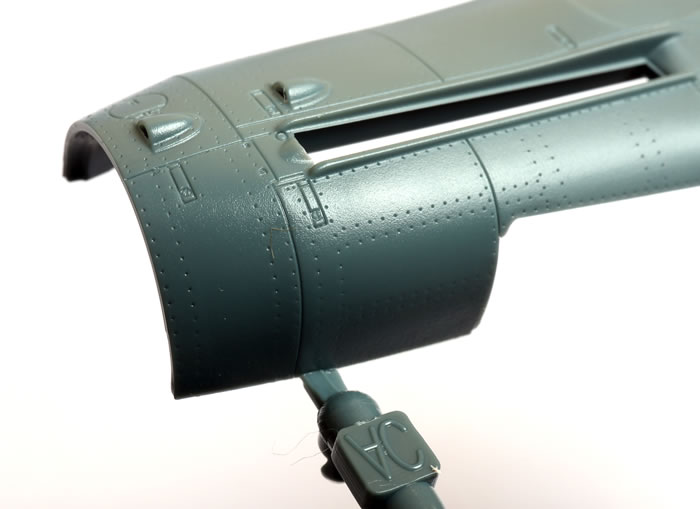
Specific nose scoops and filler caps are also correct for the Bf 109 G-6/AS.
The armoured glass “Galland Panzer” and several optional windscreens and canopies are provided on the clear sprue. The inclusion of the clear fuel line is a nice touch. The inspection tube may be masked so that it remains clear after painting.
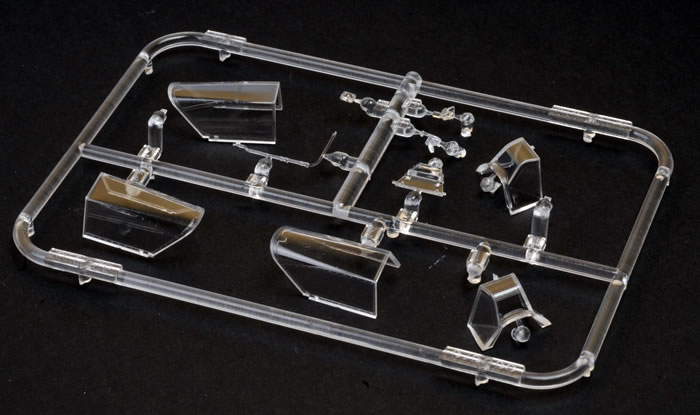
The photo-etched parts are new too, although I am hard pressed to find any differences between this one and the fret from the previously released Regensburg / WNF / Diana kits.
Each instrument dial is topped by a glossy clear dome that looks like a lens. It is hard to pick this up with a camera under studio lights, but it looks convincing when viewed close-up and personal.
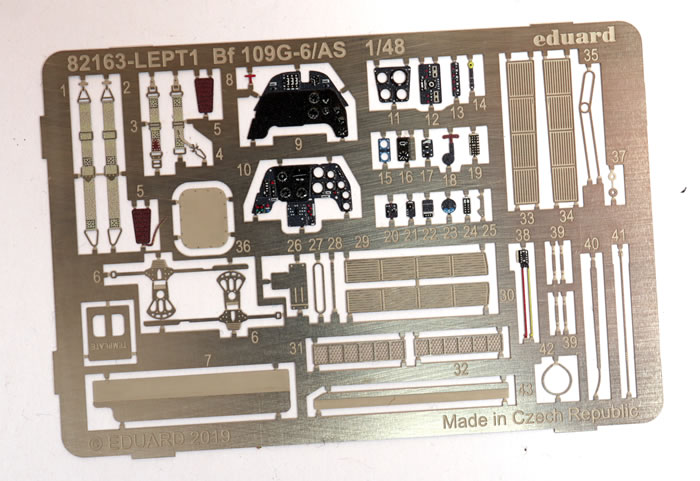
Apart from these replacements and additions, the other sprues are the same as the re-tooled Bf 109 G-6 kits. This is a good thing!
In 2013, Eduard’s Spitfire family set a new benchmark for 1/48 scale surface detail, and this Bf 109 G-6/AS is equally impressive in this regard. Panel lines are very crisp, fine and even. Lines of rivets are present, but they are incredibly subtle. The rivet lines seem to accurately follow the pattern applied to the full-sized aircraft too.
I was impressed to see that the small scoops on the nose are actually hollowed out - nice! Other raised surface features include the sealing strip between the mid-fuselage and the rear of the engine cowling.
Fabric matches this high standard, with strip and stitching texture beautifully presented on the control surfaces. If you look closely enough, you will even see the zig-zag pinking edges on the fabric strips.
The wheel wells are nicely detailed and are correctly concave thanks to the bulges moulded to the top of the wings.
Eduard depicts the wheel well sidewalls with the zippered canvas covers at the rear. The fabric texture looks good, and the zipper is represented by a raised line.
The exhausts are supplied in one piece for each side. The centreline weld beads are present, and each of the stacks are hollowed out at the end. In common with the previous Eduard Bf 109 F/G family, the exhausts are slightly too tall. This is only really apparent on the starboard side as the port exhausts are partially covered by an extended fairing.
Propeller blades look to be a good shape, with nice pitch collar and hub detail.
Markings
Markings are supplied for five nicely varied Messerschmitt Bf 109 G-10s:
-
Red 2, Hptm. Friedrich-Karl Müller, CO of 1./NJGr. 10, Werneuchen, Germany, July 1944. Finished in standard RLM 74/75/76 greys with rough black painted onto the lower wings and fuselage. Wide red RV band on rear fuselage.
-
Black Chevron Vertical Bar , Stab I./JG 3, Gütersloh, Germany, July 1944. Finished in standard RLM 74/75/76 greys and narrow white RV band.
-
Black Double Chevron, W. Nr. 110087, flown by Hptm. Horst Carganico, CO of I./JG 5, Herzogenaurach, Germany, May 1944. Finished in overall RLM 76 Light Blue. Yellow lower cowling.
-
Green 5, flown by Oblt. Manfred Dieterle, 2./EJG 2, Hagenow, Germany, December 1944. Finished in overall black.
-
Yellow 2, W. Nr. 412807, flown by Uffz. Heinz Zimmermann, 6./JG 27, Fels am Wagram, Austria. Finished in standard RLM 74/75/76 greys and narrow green RV band.

The two decal sheets are perfectly printed in the Czech Republic. One sheet carries the national markings and unique numbers, chevrons, Gruppe markings, unit insignia and kill markings; while the other has a wide selection of generic stencil markings that will be suitable for mid-war to late-war subjects.
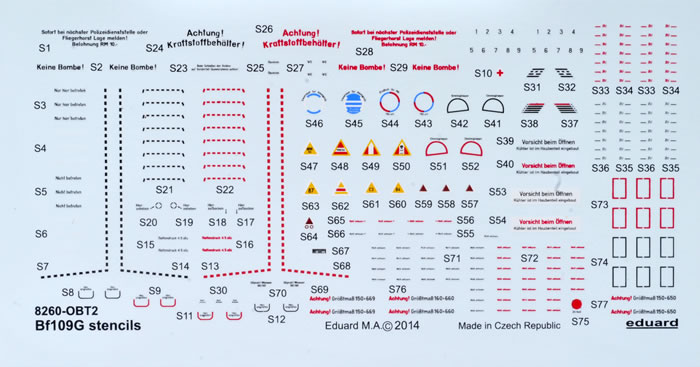
Printing, colours and registration is perfect on my sample.
Eduard's 1/48 scale Messerchmitt Bf 109 G-6/AS is a very welcome addition to their re-tooled Gustav family.
This is a great kit, and if you want a G-6/AS, this is pretty much the only game in town.
Thanks to Eduard for the sample
Review Text and Model Images Copyright © 2019 by
Brett Green
Page Created 22 April, 2020
Last updated
22 April, 2020
Back to HyperScale Main Page
Back to Reviews Page |
